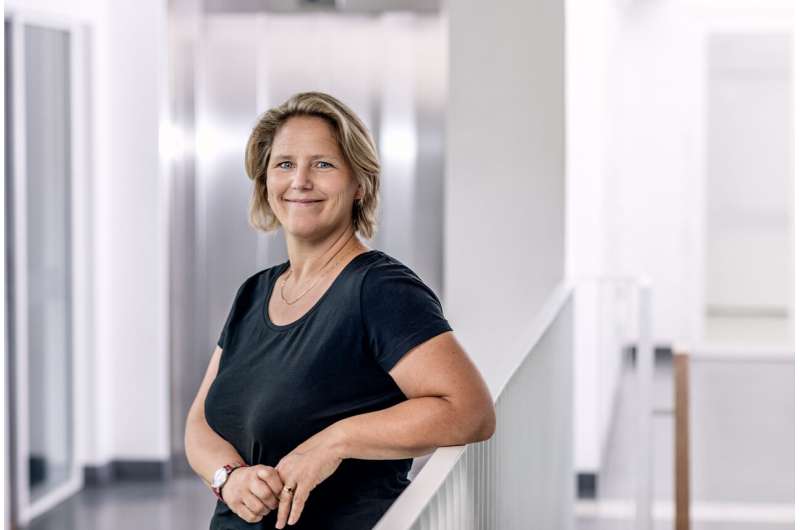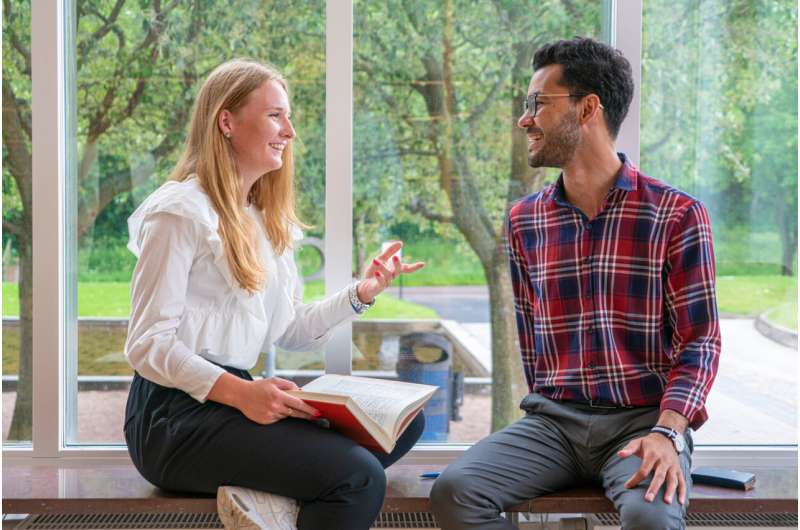This article has been reviewed according to Science X's editorial process and policies. Editors have highlighted the following attributes while ensuring the content's credibility:
fact-checked
trusted source
proofread
Pairing students supports integration at universities, finds research

The university world is international, but grapples with difficulties in integrating students from different countries. New research from Chalmers University of Technology, Sweden, points to a method that both reduces academic and social gaps and increases well-being. The recipe for success is to work in pairs—as chosen by the teacher.
There is plenty of research indicating that integration is a decisive factor for a successful student life, both socially and academically, for the individual and for the university. Students who are involved in activities and feel connected to their fellow students can get higher grades and are more likely to continue studying. But getting there is a challenge—especially when it comes to the international students. So as universities internationalize, the issue becomes increasingly pressing.
"If students are allowed to choose freely, they tend to cooperate with people from the same ethnic group as themselves. The interaction between the students is therefore marginal and reduces the feeling of participation and belonging with others," says Becky Bergman, senior lecturer and one of the authors of the new study that was carried out during the corona pandemic, when the teaching took place online.
Pair work reduced stress
But what happens if the students are not allowed to decide for themselves, but instead the teacher provides conditions for who will cooperate? Well, then you see very positive effects. "It became very clear that academic and social gaps were bridged when the teacher decided the pairs, because the students were forced to handle challenges together in a completely different way than when they choose their own partners or work in larger groups."
The students did not lack challenges. The workload and the digital way of working were tough for many, yet they stated that working in pairs reduced the stress that the task entailed, that they shared the tasks fairly and that the way of working gave rise to new personal contacts and in some cases even friendships. One student said that after they had done their tasks, they "spent 45 minutes talking about cars. It was great fun!"
"It is a very interesting result. I find it hard to see that these positive effects would occur without guidance from the teacher, especially since the course was conducted online. The pairs were formed right at the beginning of the course, before any informal groups had time to form. I think that was important," says Bergman.

A surprise was the result about communication. Unlike previous research showing that communication in intercultural constellations is a barrier, it was quite the opposite here. One of the factors that the students valued most was—good communication.
"One explanation could be that previous research was done in English-speaking countries, while in our study almost no one had English as their mother tongue. This means that everyone was used to speaking and understanding a second language."
Guidance and structure important to succeed
Internationalization and intercultural competence are often emphasized as important for universities and considering the results of the new study, Becky Bergman sees teacher guidance and structure as success factors to get there. "We know that integration does not happen by itself, and we cannot put the responsibility on individual students. We need teacher guidance and structured action at all levels so that every single student can experience participation and belonging and can reach their full potential," says Bergman.
The study went in depth with 64 students, with 14 different nationalities, and their experiences of the course. During eight weeks, they kept a diary on a weekly basis, and some of the students were also followed up with qualitative interviews.
The research is published in the Journal of Studies in International Education.
More information: Becky Bergman et al, Integrating Home and International Students in HE: Academic and Social Effects of Pair Work PBL Assignments Online, Journal of Studies in International Education (2023). DOI: 10.1177/10283153221150117
Provided by Chalmers University of Technology




















